In today’s world, inclusivity in design has become a critical aspect of creating spaces that cater to the needs of all individuals, regardless of ability. One of the most powerful tools in achieving this goal is lighting. While we often think of lighting as something that simply illuminates a room, its impact on accessibility and functionality goes far beyond that. Proper lighting design can ensure that environments are accessible, functional, and comfortable for everyone, including those with physical, sensory, and cognitive impairments. In this post, we will explore the role of lighting in inclusive design and how it can significantly improve the usability of a space for all individuals.
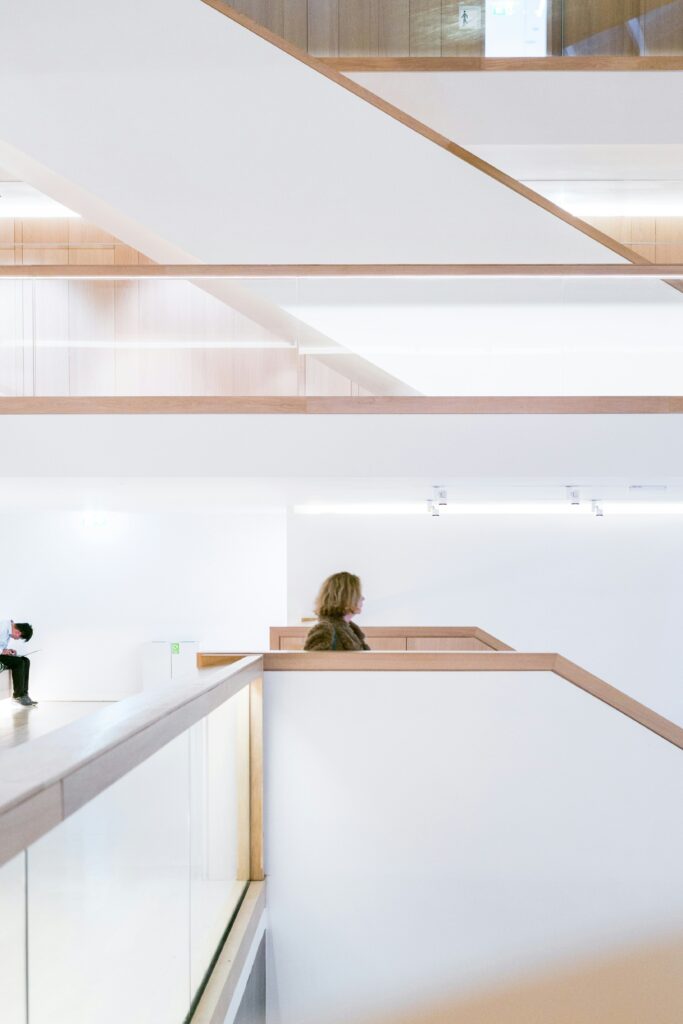
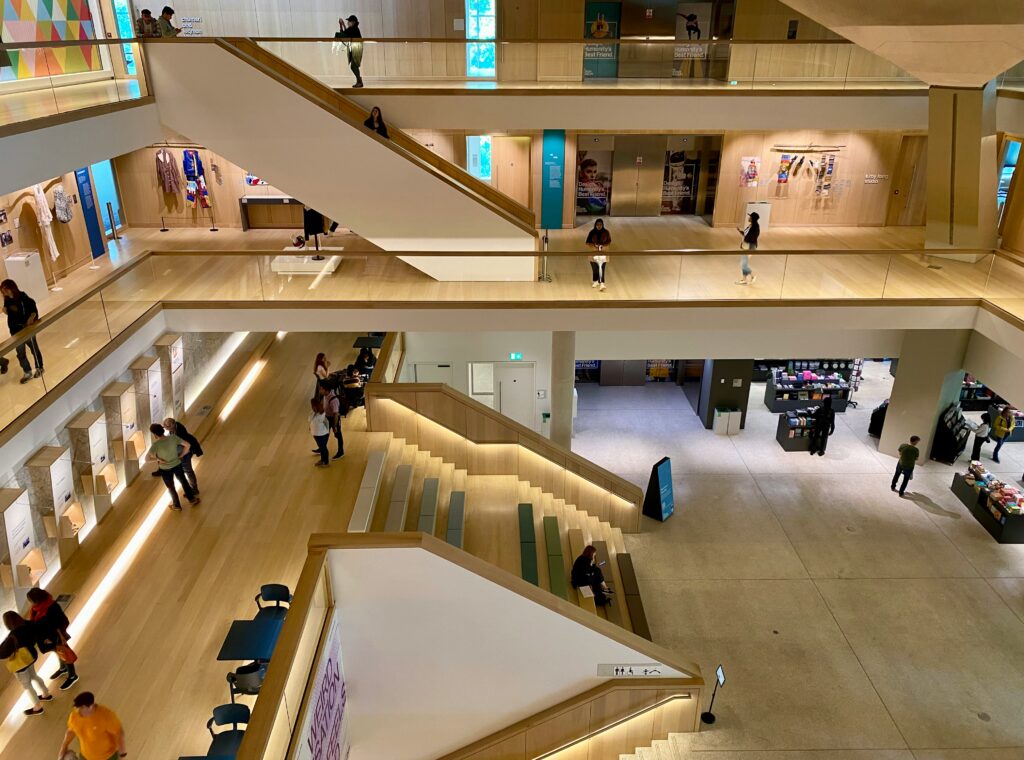
Accessibility in Lighting: More Than Just Illumination
Lighting plays a huge role in accessibility. It helps people see clearly and move around spaces safely, which is key for everyone but especially for those with visual impairments. Beyond just lighting things up, it reduces accidents, minimizes strain, and boosts overall comfort.
For those with low vision or blindness, smart lighting design makes all the difference. It’s not just about bright lights; it’s about placing task and accent lighting thoughtfully. Even, bright lighting can keep shadows at bay, preventing obstacles from sneaking up on you. Plus, giving people control over their lighting, like adjusting brightness or color temperature, lets them customize their space to fit their needs.
In spaces like schools, healthcare settings, or public venues, lighting also plays a role for people with cognitive impairments, such as dementia. Non-glare, soft lighting helps ease confusion and disorientation. And by using colour contrast in the lighting, we can highlight key features like handrails, doorways, or emergency exits, making sure those with cognitive impairments can easily spot what they need.
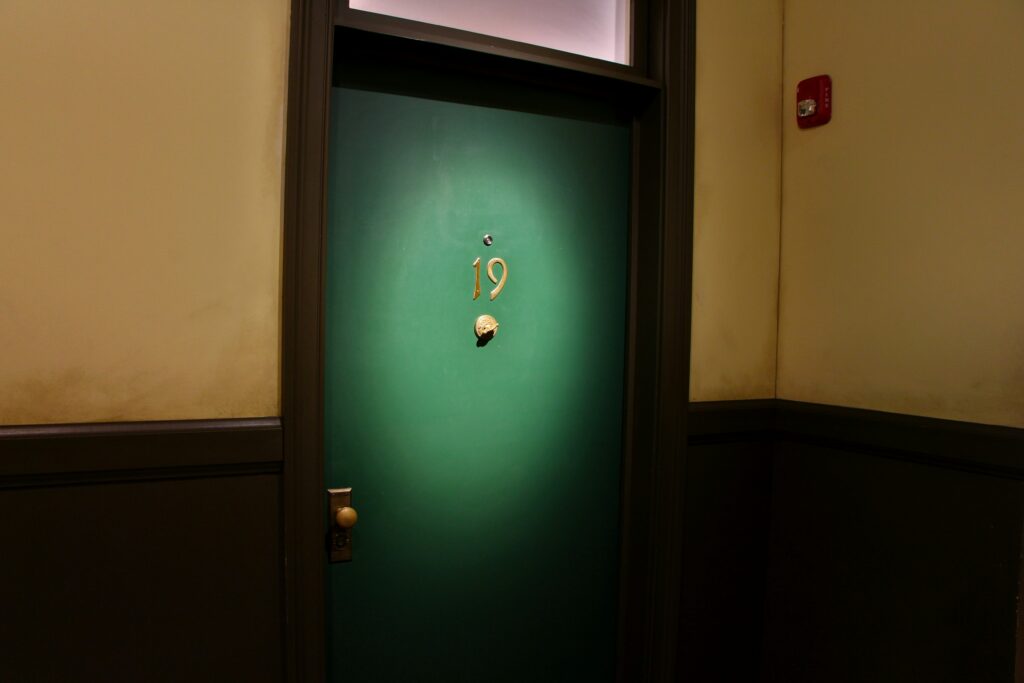
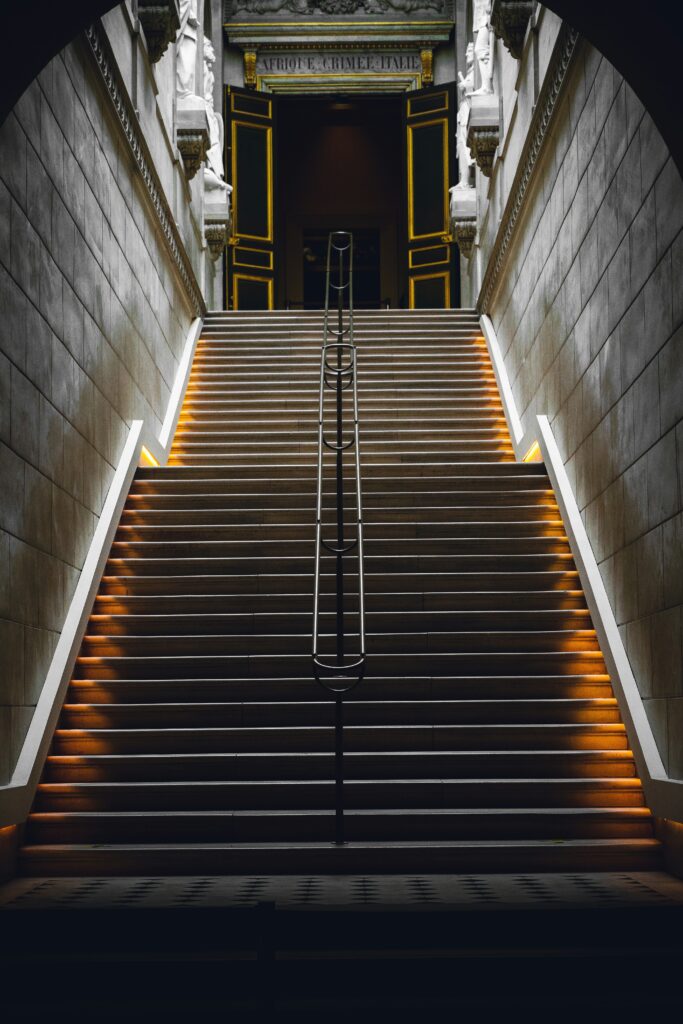

The Role of Lighting in Inclusive Design for Emotional and Sensory Comfort
Lighting isn’t just about functionality. It plays a big part in how we feel. For those with sensory sensitivities, like individuals on the autism spectrum, harsh or flickering lights can actually be uncomfortable or even painful. That’s where inclusive lighting design steps in. The right lighting can make a space feel safer, more calming, and give people a sense of control.
Dimmable lights and adjustable color temperatures are essential tools for giving people control over their environment. And let’s not forget about natural light; it has serious benefits. Studies show that exposure to daylight can boost mood, improve cognitive function, and help with sleep. By maximizing daylight and incorporating adjustable lighting, we create spaces that cater to all kinds of needs.
In places like hospitals, rehabilitation centers, or even offices, lighting choices set the emotional tone. Soft, warm lighting can calm nerves in a waiting room, while bright, cool lighting might help people stay focused at work. When lighting can adapt to different needs, we’re designing with everyone in mind.
Case Study: Accessibility Requirements Push the Envelope in Office Lighting Design
A standout example of inclusive lighting design is the pilot project for Accessibility Standards Canada (ASC) in Gatineau, Quebec, where LWG Architectural Interiors took the lead on design and project management. The new ASC office, which used to be a department store in a shopping mall, was transformed to showcase universal design tailored to meet the accessibility needs of a diverse team, most of whom live with disabilities.
What I really appreciate about this project is how it balances aesthetics with true functionality. It’s not just about lighting up a space; it’s about understanding the unique needs of the people who work there. For instance, the design features Luminis’ Hollowcore HC1605 pendant luminaires, which offer both uplight and downlight. This design wasn’t chosen for looks alone; it was selected because it provided general illumination while also allowing employees to adjust lighting to their personal preferences, making the environment both visually comfortable and adaptive. Being able to control both the brightness and color temperature at each workstation gives the team the ability to truly personalize their space.
What I find especially valuable is how this project took lighting controls a step further, ensuring inclusivity. Employees can adjust their lighting via a physical control or even voice commands, empowering them to create a space that suits their sensory and visual needs. It’s these kinds of small, thoughtful details that can make a huge difference, especially for people managing visual impairments or depth perception issues.
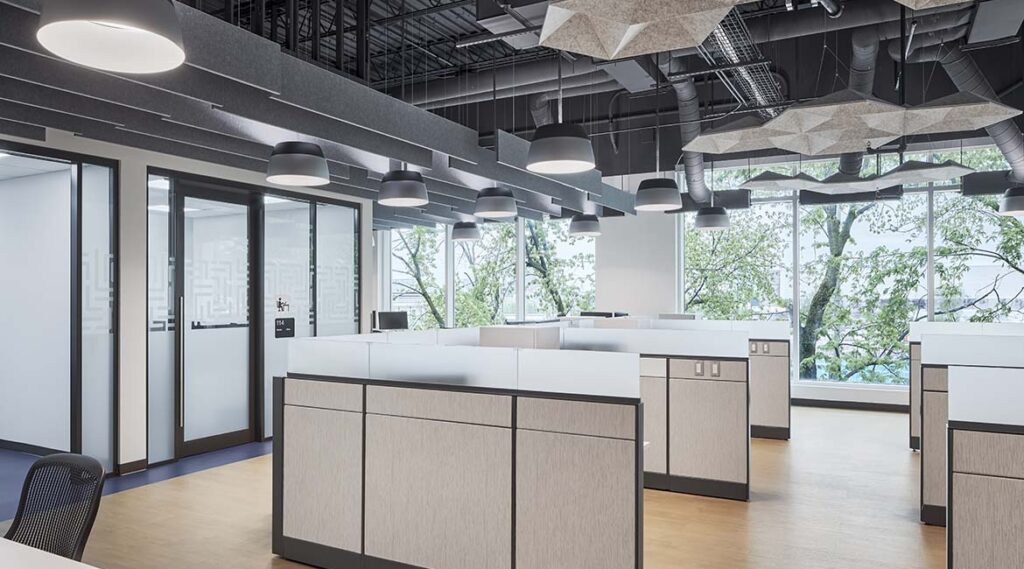
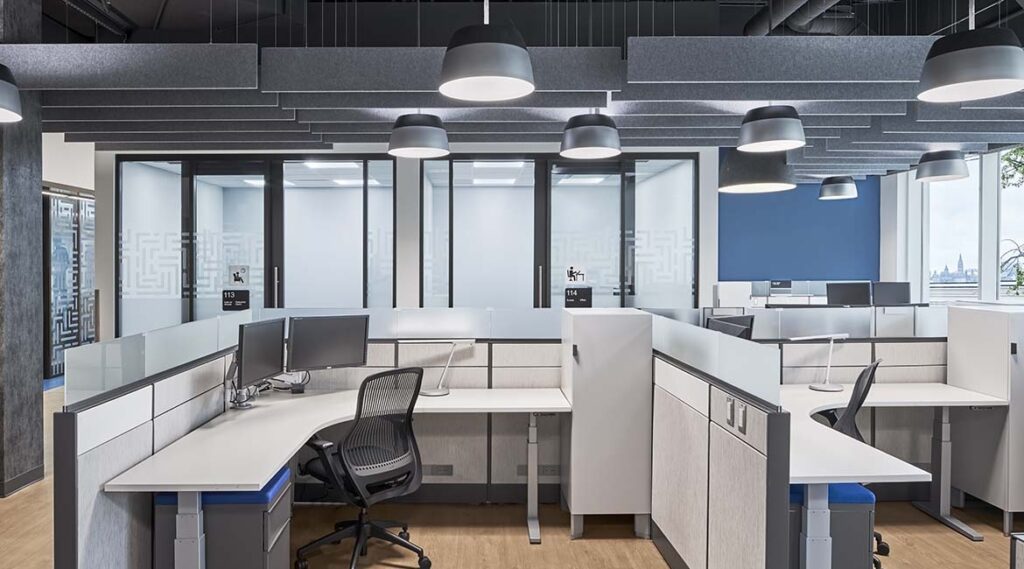
Another standout feature is how the lighting design minimizes visual distractions. The Hollowcore pendants blend in seamlessly while still providing effective illumination, which helps those with visual impairments focus without feeling overwhelmed. It’s a subtle design choice that shows how lighting can work as a tool for both function and comfort.
This project, in my opinion, sets a real benchmark for future inclusive design projects. It’s a prime example of how lighting and technology can work together to create spaces that cater to everyone’s needs. What excites me most is that this pilot project has set the stage for more government buildings and office spaces to embrace the idea that accessibility and comfort should be built into the design from the start, not as an afterthought.
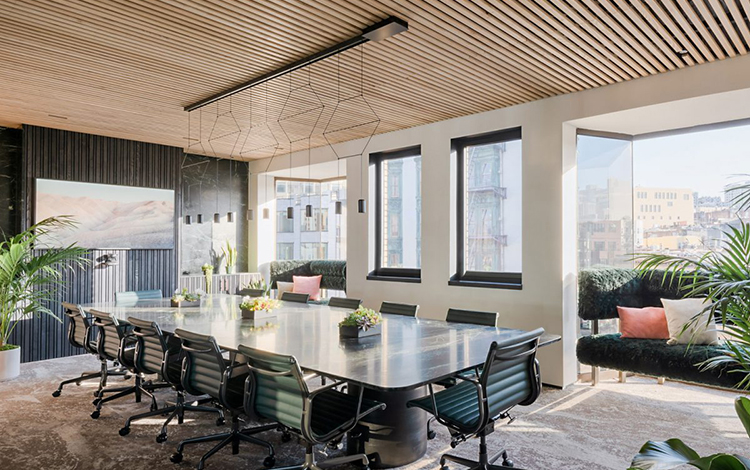
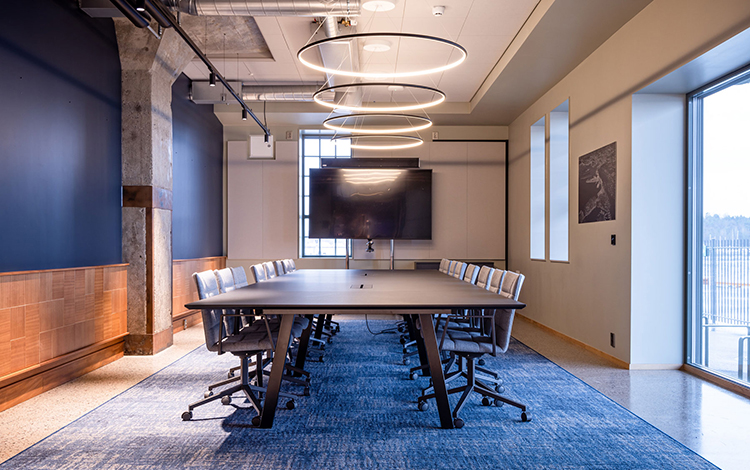
Lighting in Residential Spaces: Enhancing Home Accessibility
Inclusive design isn’t limited to public spaces or workplaces—residential environments benefit greatly from thoughtful lighting solutions as well. In homes, especially those with aging individuals or people with disabilities, lighting plays a crucial role in promoting independence, safety, and overall well-being.
For individuals with mobility issues, having well-lit paths, hallways, and stairways is essential. Motion-activated lighting in hallways or bathrooms ensures that lights are on when needed, minimizing the risk of falls or accidents during the night. In kitchens or bathrooms, task lighting is vital for individuals with low vision, helping them perform activities like cooking, reading labels, or applying makeup with greater ease.
For those who may have difficulty with manual dexterity, smart lighting systems are a game-changer. These systems allow homeowners to control lighting through voice commands, mobile apps, or even preset routines, eliminating the need to reach for switches or knobs. Moreover, adjustable light temperatures can help individuals with various sensory needs feel more comfortable in their homes, whether they require bright lighting during the day for focus or softer lighting in the evening to promote relaxation.
In residential design, the role of lighting in inclusive design is also key for mental and emotional well-being. Lighting that mimics natural daylight patterns can help regulate circadian rhythms, supporting better sleep and overall health. Incorporating daylighting strategies such as skylights or large windows also connects residents to the outdoors, reducing feelings of isolation or depression—an important consideration in the home environment.
Integrating Lighting with Other Design Elements for Inclusivity
Lighting doesn’t exist in isolation; it works in harmony with other elements of a space to create an inclusive environment. By combining lighting with strategic use of color, texture, and layout, designers can enhance accessibility. High-contrast lighting, for example, can help individuals with visual impairments differentiate between walls, floors, and furniture, making navigation easier. Additionally, placing light fixtures at specific points to highlight textures or patterns can help guide individuals through a space and provide visual cues for navigation.
In environments such as airports, train stations, or large public spaces, lighting can be used to direct flow and establish clear pathways, particularly for those with cognitive impairments or mobility challenges. Combining clear signage with well-lit areas reduces confusion and ensures that individuals can easily find their way to key locations, like exits, bathrooms, or waiting areas.

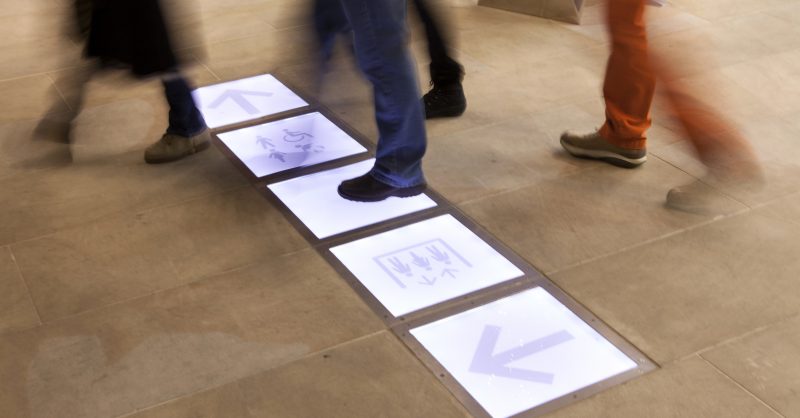
Conclusion: The Power of Lighting in Building Accessible Spaces
Incorporating inclusive design principles into every aspect of a space is essential for ensuring that everyone, regardless of ability, feels welcome and capable of navigating their surroundings. The role of lighting in inclusive design is undeniable. Lighting goes beyond mere visibility; it influences how we feel, how we function, and how we experience spaces. Whether it’s through adjusting light levels for sensory comfort, ensuring clear pathways for those with mobility impairments, or creating a welcoming atmosphere, lighting is a key element in designing spaces that cater to all individuals.
As designers, it’s our job to recognize how lighting impacts accessibility and overall functionality. By doing so, we can create environments that not only foster safety and independence but also contribute to the well-being of all who use them. So, the next time you’re designing a space, think beyond just lighting a room. Consider how thoughtful lighting design can truly enhance the lives of those interacting with it.
For more insights on lighting design and inclusivity, check out my Journal entries here
In today’s world, inclusivity in design has become a critical aspect of creating spaces that cater to the needs of all individuals, regardless of ability. One of the most powerful tools in achieving this goal is lighting. While we often think of lighting as something that simply illuminates a room, its impact on accessibility and functionality goes far beyond that. Proper lighting design can ensure that environments are accessible, functional, and comfortable for everyone, including those with physical, sensory, and cognitive impairments. In this post, we will explore the role of lighting in inclusive design and how it can significantly improve the usability of a space for all individuals.


Accessibility in Lighting: More Than Just Illumination
Lighting plays a huge role in accessibility. It helps people see clearly and move around spaces safely, which is key for everyone but especially for those with visual impairments. Beyond just lighting things up, it reduces accidents, minimizes strain, and boosts overall comfort.
For those with low vision or blindness, smart lighting design makes all the difference. It’s not just about bright lights; it’s about placing task and accent lighting thoughtfully. Even, bright lighting can keep shadows at bay, preventing obstacles from sneaking up on you. Plus, giving people control over their lighting, like adjusting brightness or color temperature, lets them customize their space to fit their needs.
In spaces like schools, healthcare settings, or public venues, lighting also plays a role for people with cognitive impairments, such as dementia. Non-glare, soft lighting helps ease confusion and disorientation. And by using colour contrast in the lighting, we can highlight key features like handrails, doorways, or emergency exits, making sure those with cognitive impairments can easily spot what they need.



The Role of Lighting in Inclusive Design for Emotional and Sensory Comfort
Lighting isn’t just about functionality. It plays a big part in how we feel. For those with sensory sensitivities, like individuals on the autism spectrum, harsh or flickering lights can actually be uncomfortable or even painful. That’s where inclusive lighting design steps in. The right lighting can make a space feel safer, more calming, and give people a sense of control.
Dimmable lights and adjustable color temperatures are essential tools for giving people control over their environment. And let’s not forget about natural light; it has serious benefits. Studies show that exposure to daylight can boost mood, improve cognitive function, and help with sleep. By maximizing daylight and incorporating adjustable lighting, we create spaces that cater to all kinds of needs.
In places like hospitals, rehabilitation centers, or even offices, lighting choices set the emotional tone. Soft, warm lighting can calm nerves in a waiting room, while bright, cool lighting might help people stay focused at work. When lighting can adapt to different needs, we’re designing with everyone in mind.
Case Study: Accessibility Requirements Push the Envelope in Office Lighting Design
A standout example of inclusive lighting design is the pilot project for Accessibility Standards Canada (ASC) in Gatineau, Quebec, where LWG Architectural Interiors took the lead on design and project management. The new ASC office, which used to be a department store in a shopping mall, was transformed to showcase universal design tailored to meet the accessibility needs of a diverse team, most of whom live with disabilities.
What I really appreciate about this project is how it balances aesthetics with true functionality. It’s not just about lighting up a space; it’s about understanding the unique needs of the people who work there. For instance, the design features Luminis’ Hollowcore HC1605 pendant luminaires, which offer both uplight and downlight. This design wasn’t chosen for looks alone; it was selected because it provided general illumination while also allowing employees to adjust lighting to their personal preferences, making the environment both visually comfortable and adaptive. Being able to control both the brightness and color temperature at each workstation gives the team the ability to truly personalize their space.
What I find especially valuable is how this project took lighting controls a step further, ensuring inclusivity. Employees can adjust their lighting via a physical control or even voice commands, empowering them to create a space that suits their sensory and visual needs. It’s these kinds of small, thoughtful details that can make a huge difference, especially for people managing visual impairments or depth perception issues.


Another standout feature is how the lighting design minimizes visual distractions. The Hollowcore pendants blend in seamlessly while still providing effective illumination, which helps those with visual impairments focus without feeling overwhelmed. It’s a subtle design choice that shows how lighting can work as a tool for both function and comfort.
This project, in my opinion, sets a real benchmark for future inclusive design projects. It’s a prime example of how lighting and technology can work together to create spaces that cater to everyone’s needs. What excites me most is that this pilot project has set the stage for more government buildings and office spaces to embrace the idea that accessibility and comfort should be built into the design from the start, not as an afterthought.


Lighting in Residential Spaces: Enhancing Home Accessibility
Inclusive design isn’t limited to public spaces or workplaces—residential environments benefit greatly from thoughtful lighting solutions as well. In homes, especially those with aging individuals or people with disabilities, lighting plays a crucial role in promoting independence, safety, and overall well-being.
For individuals with mobility issues, having well-lit paths, hallways, and stairways is essential. Motion-activated lighting in hallways or bathrooms ensures that lights are on when needed, minimizing the risk of falls or accidents during the night. In kitchens or bathrooms, task lighting is vital for individuals with low vision, helping them perform activities like cooking, reading labels, or applying makeup with greater ease.
For those who may have difficulty with manual dexterity, smart lighting systems are a game-changer. These systems allow homeowners to control lighting through voice commands, mobile apps, or even preset routines, eliminating the need to reach for switches or knobs. Moreover, adjustable light temperatures can help individuals with various sensory needs feel more comfortable in their homes, whether they require bright lighting during the day for focus or softer lighting in the evening to promote relaxation.
In residential design, the role of lighting in inclusive design is also key for mental and emotional well-being. Lighting that mimics natural daylight patterns can help regulate circadian rhythms, supporting better sleep and overall health. Incorporating daylighting strategies such as skylights or large windows also connects residents to the outdoors, reducing feelings of isolation or depression—an important consideration in the home environment.
Integrating Lighting with Other Design Elements for Inclusivity
Lighting doesn’t exist in isolation; it works in harmony with other elements of a space to create an inclusive environment. By combining lighting with strategic use of color, texture, and layout, designers can enhance accessibility. High-contrast lighting, for example, can help individuals with visual impairments differentiate between walls, floors, and furniture, making navigation easier. Additionally, placing light fixtures at specific points to highlight textures or patterns can help guide individuals through a space and provide visual cues for navigation.
In environments such as airports, train stations, or large public spaces, lighting can be used to direct flow and establish clear pathways, particularly for those with cognitive impairments or mobility challenges. Combining clear signage with well-lit areas reduces confusion and ensures that individuals can easily find their way to key locations, like exits, bathrooms, or waiting areas.


Conclusion: The Power of Lighting in Building Accessible Spaces
Incorporating inclusive design principles into every aspect of a space is essential for ensuring that everyone, regardless of ability, feels welcome and capable of navigating their surroundings. The role of lighting in inclusive design is undeniable. Lighting goes beyond mere visibility; it influences how we feel, how we function, and how we experience spaces. Whether it’s through adjusting light levels for sensory comfort, ensuring clear pathways for those with mobility impairments, or creating a welcoming atmosphere, lighting is a key element in designing spaces that cater to all individuals.
As designers, it’s our job to recognize how lighting impacts accessibility and overall functionality. By doing so, we can create environments that not only foster safety and independence but also contribute to the well-being of all who use them. So, the next time you’re designing a space, think beyond just lighting a room. Consider how thoughtful lighting design can truly enhance the lives of those interacting with it.
For more insights on lighting design and inclusivity, check out my Journal entries here
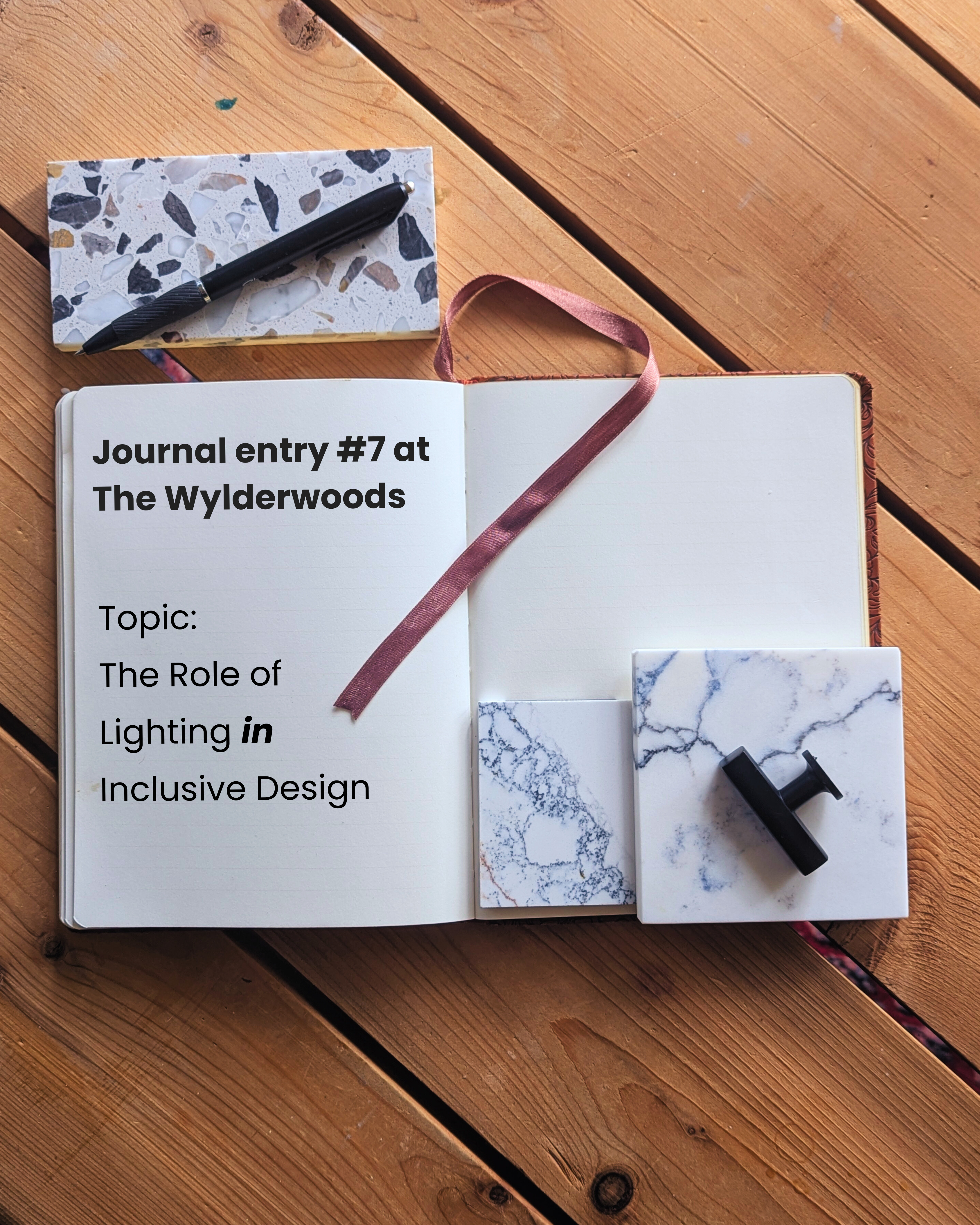
LEAVE A COMMENT
Comments